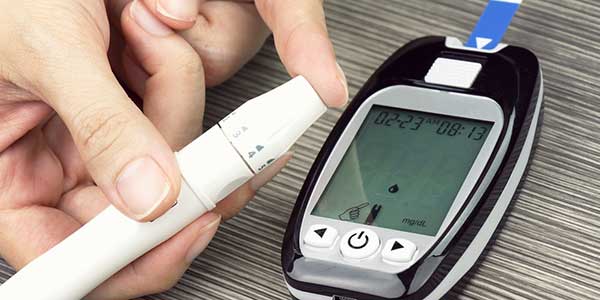
Insulin resistance and diabetes are metabolic disorders, in which the metabolic process of glucose provided from carb sources is compromised.
Without careful attention and management, long-term consequences such as heart disease are at risk.
But exactly what is insulin resistance, its potential signs and symptoms, and can it be reversed? Learn the facts here!
What Is Insulin Resistance?
Before understanding insulin resistance, it is essential to understand what insulin is. Insulin is a hormone required to use glucose as energy. It assists in glucose entry into the cells following carbohydrate intake.
Think of insulin as a key. When glucose from carb sources is ingested and absorbed, insulin is released. The insulin essentially unlocks the cells' "door" for glucose to enter.
Insulin resistance is when cells do not respond well to insulin. They cannot easily take up glucose from the blood, thus leading to high blood sugar or glucose.
People with prediabetes, also known as borderline diabetes, already have some degree of insulin resistance. If left uncontrolled, blood sugars start to elevate and type 2 diabetes risk increases.
Insulin Resistance & Type II Diabetes
Insulin resistance and diabetes are metabolic disorders, in which the metabolic process of glucose is compromised.
If insulin resistance is left uncontrolled, insulin resistance can result in prediabetes or type 2 diabetes over time. Insulin resistance can also develop into insulin resistance syndrome, which may also be called metabolic syndrome. Metabolic syndrome is a cluster of conditions shown to increase the risk of heart disease, stroke, and diabetes.
The exact cause of insulin resistance is not primarily unknown. However, health experts commonly point to an overweight or obese status, often related to poor dietary intake and a sedentary lifestyle.
Additional risk factors for insulin resistance include:
• Age, particularly those aged 45 or older
• Family history of obesity and/or diabetes
• African American, Alaska Native, American Indian, Asian American, Hispanic/Latino, Native Hawaiian, or Pacific Islander American ethnicity
• History of certain health conditions, including gestational diabetes, high blood pressure, high cholesterol levels, polycystic ovary syndrome (PCOS), and sleep apnea
• Hormonal disorders such as Cushing's syndrome
• Certain medications such as antipsychotics and glucocorticoids
Symptoms of Insulin Resistance
Some individuals may experience more severe insulin resistance symptoms than others. What's more, some people with insulin resistance may go without.
Nonetheless, the following indicators are mentionable and noteworthy, particularly in the absence of lab work.
1. Experiencing intense cravings for sugar or starch.
The body may start to crave sugars and starches when they cannot be utilized properly.
If glucose never makes it into the cells and stays in the blood, it may feel deprived. This can accelerate a feeling of sugar deprivation and craving.
2. Heightened hunger after breakfast.
Breakfast often consists of toast, sugary cereal, and/or a stack of pancakes with syrup. The high carbohydrate and sugar content spikes blood glucose levels, only to quickly drop it.
The rapid fall of blood sugar can subsequently increase a persistent, dramatic hunger.
3. Feeling weak or shaky without meal consistency.
Without consistent meals, comes unstable blood sugars. Insulin will start to heighten and once a meal is consumed (especially if rich in carbohydrate), blood sugar may plummet.
In turn, one may feel weak, shaky, and fatigued.
4. Eating actually stimulates hunger.
One may wake up or arrive at lunch hours without an appetite. As the day goes on, hunger naturally starts to build. Food is consumed, only to become hungrier.
Dr. Caroline Cederquist, the founding physician of bistroMD, also discovered eating an unmatched balance of foods can stimulate appetite.
5. Losing weight is difficult and challenging.
This may be the most discouraging consequence of insulin resistance some face. High levels of insulin can convince the body to easily store fat, making it difficult to lose weight.
Despite increased determination to lose it, heightened insulin levels may take precedence and hold onto weight.
6. Potential risks of certain health conditions.
Being resistant to insulin can also increase the risk of a number of health conditions. These include breast cancer, pancreatic cancer, lymphoma, dementia, kidney disease, nerve damage and heart attack.
If experiencing any of the signs and symptoms of insulin resistance, consult with a doctor right away. In addition to acquiring a physical and family history, they will likely test for insulin resistance.
Insulin Tolerance Test
A glucose tolerance test is commonly used to diagnose diabetes. According to the Journal of Diabetes Investigation, the insulin tolerance test (ITT) is also useful for evaluating insulin sensitivity in diabetes. What’s more, taking an insulin tolerance test can offer more objective insight to experienced symptoms.
During the test, insulin will be given. Periodic blood samples, and sometimes urine samples, will then be collected. A simple blood glucose test may also be administered.
Prediabetes can be identified with a simple blood test. A fasting blood sugar reading between 100 to 124 mg/dL indicates prediabetes. This is essentially a wake-up call to make healthier changes.
Making lifestyle changes can reverse insulin resistance and the risk of a diabetes diagnosis.
How to Reverse Insulin Resistance
Luckily, insulin resistance can be treated and does have the opportunity to reverse itself with simple tips and ongoing efforts.
The following recommendations are based on a total lifestyle change, including a healthful diet and regular exercise. Maintaining a healthy weight and reducing stress can be helpful as well.
1. Consume well-balanced meals and snacks.
Instead of eating a meal rich in carb, balance with lean protein, healthy fat, and fiber sources. A well-rounded plate lessens the risk of dropped blood sugar levels, especially following meals.
Replacing a high carbohydrate snack with one rich in protein can further reduce unpleasant symptoms. Including fiber and healthy fat is helpful to keep blood sugar and hunger at bay, too.
2. Eat consistently and regularly to control blood sugars and hunger.
Importantly, too, do not wait extensive hours at a time to accommodate hunger. Eating consistent meals and snacks can keep blood sugars stable and reduce dramatic fluctuations.
If feelings of hunger during breakfast and lunch are absent, slowly increase their intake to reduce ravenous cravings come afternoon.
3. Participate in aerobic exercise and strength training.
Along with a healthy diet, regular physical activity also fits in the insulin resistance puzzle.
During exercise, active muscle cells help uptake circulating blood sugars to replete energy reserves without a critical need for insulin. With more muscle available, the greater the opportunity for blood sugars to stabilize.
Aim for at least 150 minutes of aerobic exercise weekly, or 30 minutes daily most days of the week. Also, incorporate strength-training exercises at least two or three times. All-in-all, dismiss a sedentary lifestyle and try to include more physical activity throughout the day.
4. Reach and maintain a healthy weight.
Weight loss is valuable for combating insulin resistance and reducing the risk of developing diabetes.
The National institute of Diabetes and Digestive and Kidney Diseases suggests losing five to seven percent of body weight. If over 200 pounds, they recommend losing 10 to 14 percent.
Adhering to and implementing lifestyle changes and guidance above can naturally cause weight loss and help reverse insulin resistance. Losing weight also helps reduce the amount of insulin needed each day to process meals.
5. Consider other factors for insulin resistance treatment.
In addition to diet, exercise, and weight loss, other factors can help reverse and treat insulin resistance. These include ensuring adequate sleep and reducing stress.
Medication is not warranted without the presence of a diabetes diagnosis at this time. However, it is still important to work with a healthcare provider to advise a safe and effective plan.
The most important part of reversing insulin resistance is keeping in mind it usually requires a lifestyle change. However, making daily changes can progress toward a healthy lifestyle for the long-term.
(And restrictive and chronic dieting and stress is a thing of the past!)







